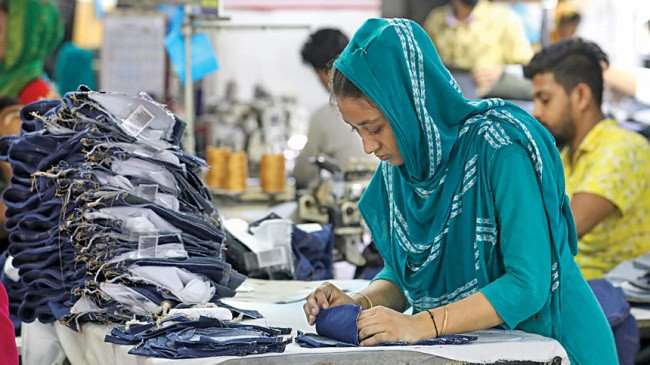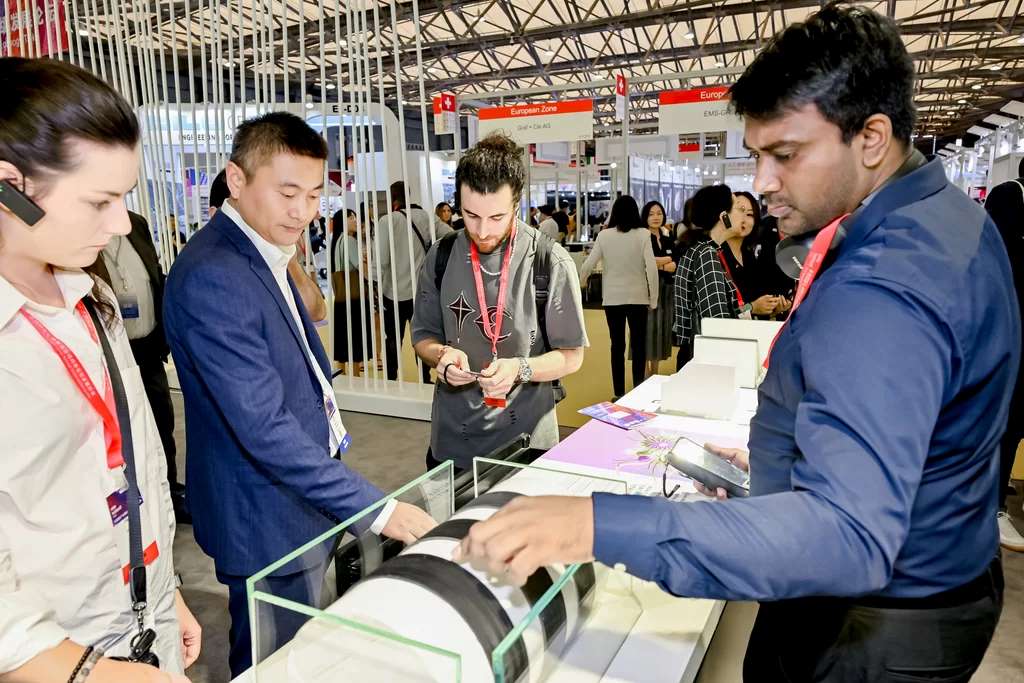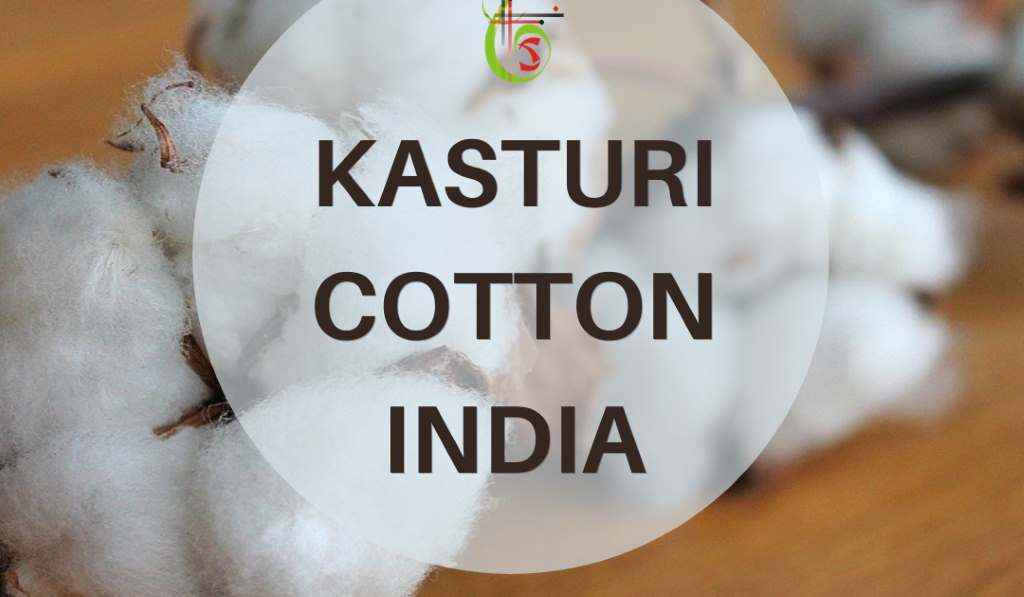FW
Breaking last year's record exhibitor figure of 3,751, Intertextile Shanghai Apparel Fabrics – Autumn Edition 2014 will reach a new high with over 3,800 exhibitors from 30 countries taking part in the fair’s 20th edition. Domestic and overseas suppliers will showcase their apparel
Following the success of last year’s denim zone, the newly designed and enlarged Beyond Denim hall will feature around 150 exhibitors from six countries and regions. In China, the latest denim products are increasingly popular as China’s expanding middle and upper classes follow western fashion trends. As a result, this year’s denim area expands to an entire hall witnessing a 25 per cent increase in exhibition space compared to last year.
In addition to denim products, accessories and functional fabrics are also a highlighted product category this year. Over 550 domestic and international accessories suppliers will feature in two halls (E6 – E7), with both garment and fashion accessories on display. Buyers can find a wide range of new accessories at the fair including a selection of zippers, buttons, lace & embroidery, linings / interlinings, threads, labels, hangtags, tape, appliqués / sequins / beads / rhinestones and fashion accessories. An Accessories Trend Forum will be located in hall E7 next to the overseas accessories zone displaying a variety of products reflecting the upcoming trends.
Mirroring current trends in the textiles industry, functional fabrics and products are the other focus areas at the fair. The exhibitors taking part are looking to benefit from the increase in demand in China for functional fabrics and see the fair as the best way to do this. Various kinds of functional fabrics will be showcased, with properties such as thermo-regulation, moisture wicking, increased durability, elasticity, windproof and more. In the domestic market in particular, functional fabrics for sportswear, ladieswear and menswear are in high demand. </br>
Meanwhile, the Intertextile Directions Trend Forum will once again showcase the trends for Autumn/Winter 2015-16 in hall W1, and this year features special labelling for eco and functional fabrics and products to help buyers more easily identify these items. Running concurrently with this fair are two other events: Yarn Expo Autumn and PH Value, which are located within the same venue as Intertextile Shanghai Apparel Fabrics and take place over three days from October 20 to 22.
Intertextile-shanghai-apparel-fabrics-autumn.hk.messefrankfurt.com
Local textile companies generated net exports worth $8.4 billion last year, accounting for about 25 per cent of the nation’s total net exports of $33.1 billion, the government of Taiwan has announced. “Eight out of every 10 yoga garments sold in the US use fabrics from Taiwan,” Bureau of Foreign Trade Chief Secretary Wang Cheng-fu said at a press conference during this year’s Taipei Innovative Textile Application Show (TITAS).
A total of 367 textile manufacturers from 11 countries are exhibiting their latest offerings through 760 booths at the three-day show, which began at the Taipei World Trade Center’s Nangang Exhibition Hall. The exhibition features functional textiles for apparel, upholstery and industrial use. It also exhibits a variety of recycled and sustainable textiles with low carbon footprints, as well as fashion textile trends for the upcoming seasons.
Taiwan’s textile companies exported products worth $11.7 billion last year, with 65 per cent of the share coming from fabrics. In the first nine months of the year, exports of the nation’s textile and apparel industry reached $8.69 billion, down 0.1 per cent from the same period last year, according to the Taiwan Textile Federation’s statistics. Imports for the same period increased 4 per cent year-on-year to $2.51 billion, the statistics showed.
Titas.org
The Rs 2,000 crore Himatsingka group is a vertically integrated home textile major with a global footprint. The group is among the largest manufacturers of drapery, upholstery and bedding products in India. The manufacturing facilities are state-of-the-art and vertically integrated.
Himatsingka operates over 10global brands in the home textile space. Its portfolio includes marquee brands like Calvin Klein Home, Barbara Barry, Esprit, Bellora and Atmosphere. The group proposes to take new initiatives to augment its brand portfolio and expand the distribution network with a view to raising revenues from brands to a level of Rs 1,200 crores over the next two years.
Profit after tax grew by 10.5 per cent as compared to the previous year. North America is the largest overseas market for the group. This includes the US, Canada and Mexico. Revenues from these markets stood at 84.6 per cent of the consolidated revenues of the group in 2013-14. The private label distribution business grew 21.6 per cent and its branded business grew 11.40 per cent.
The company has embarked on a program to integrate its various businesses. It has successfully implemented the SAP ERP platform across all its manufacturing and retail locations in India and across its distribution locations in the US.
www.himatsingka.com/
The US says Beijing's cotton price supports have breached global trade rules and wants China's support levels to be examined. China is the world’s top cotton grower. The US says prices paid to farmers by the Chinese government under the country’s farming policy exceed those allowed by the World Trade Organization. It has estimated Beijing's support has exceeded the allowed level of 8.5 per cent of the country’s crop production value for the past four years. It represented 29 per cent of production value in 2014 and exceeded 30 per cent in both 2012 and 2013.
The face-off comes at a tumultuous period for the global cotton industry. Prices have plunged by a third to loss-making levels for most US farmers as Beijing unravels a years-long stockpiling program that has bolstered global prices and demand. The authorities are replacing it with a farmer payment program and have said they will reduce import demand in 2015. That has sparked fears global inventories will swell because of reduced demand from the world’s largest buyer.
The new China policies come on the heels of the settlement of a decade-old dispute between the United States and Brazil over US cotton subsidies. The case led to an overhaul of US cotton policy and a 300 million dollar settlement.
Tripura has welcomed the proposal of Bangladeshi investors to set up garment industries in the state. People who want to set up garment units will be given plots in an industrial growth centre. Tripura has a power surplus and a gas surplus. It will be the second power surplus state in India within the next three or four months after Sikkim, once full generation starts from the Palatana and the Monarchak gas-based power plants.
A number of Indo-Bangladesh projects are currently in the pipeline, especially in Tripura. Business between the two sides is rapidly increasingly, especially through the northeast region. There is a problem in transferring funds from Bangladesh to India but the Bank of Bangladesh has given an assurance to allow investment on a case to case basis.
Already a lot of exports are being done from Bangladesh to Tripura and there are investments also coming into Tripura. The business community in Bangladesh is upbeat on business ties with Tripura and particularly with the launch of the make in India campaign Tripura is encouraging Bangladeshi investors to invest in northeast India. In turn Bangladesh has announced the creation of special economic zones for Indian investors.
Kyrgyzstan faces a decline in garment industry production. Prior to the Soviet collapse in 1991, the local textile industry relied primarily on cotton grown in Central Asia, especially Uzbekistan. But now operations depend mostly on synthetic Chinese fabrics.
Businesses have no reliable demand forecasts and poor management skills. Labor supply is a major problem. Kyrgyzstan’s complicated tax regime acts as a barrier to the formalization of the garment industry. Though existing taxs favor small companies, as soon as companies grow above 30 employees, they face higher payments and a more cumbersome payment procedure. That discourages growth.
Ever since Russia joined the World Trade Organization (WTO), it has hurt the competitive edge of Kyrgyzstan, also a member. The concern is that Russia, under its WTO commitments, will reduce tariff barriers against other exporters of garments – namely China – and thus Kyrgyz producers would lose some of the preferential margin they are currently enjoying in the Russian market. Nearly 1,62,000 workers are employed in the textile sector. Several small-scale entrepreneurs say they are against joining the Customs Union.
Compared to 2012, there was a decrease in Krygyz apparel production in 2013 because of imports of Made in Kyrgyzstan products from China and also because of the government’s decision to increase the rate of customs duties on raw materials like fabrics, accessories and other support materials for the production of apparel.
Six of Italy's biggest textile suppliers have made commitments to eliminate hazardous chemicals.These suppliers, Miroglio, Berbrand, AttilioImperiali, Italdenim, Besani and Zip, produce textile materials and accessories for a number of global luxury and fashion brands.
The suppliers have been investing in new, sustainable printing technologies with a low environmental impact and have remarkably reduced water consumption, energy use and Co2 emissions in the supply chain.Further customers will be able to follow the steps each company takes towards its commitment via its website, making it easier for them to be held accountable for their actions.
In 2013 alone these six companies produced roughly 25,000 miles of printed textile material, enough to stretch around the earth’s circumference. These commitments could, directly or indirectly, impact the production of roughly 70 million garments a year.
With these textile suppliers now showing the way, the door is now open for clothing brands to demonstrate a similar commitment. These groundbreaking commitments are proof that beautiful, toxic-free fashion is becoming the industry norm.
Italian fashion businesses are now beginning to address sustainability issues. While some labels such as Burberry and Valentino have since committed to toxic-free fashion, other big names including Versace, Gucci, Louis Vuitton and Dolce &Gabbana have yet to commit.
Vietnam's domestic garment and textile sector has to import a large quantity of cotton as the country’s cotton output meets only one per cent of local producers’ demand.Cotton has been the industry’s principal raw material. Vietnam needs more than 4,00,000tonnes to meet the rising demand and imports would continue to be the main source of cotton for the industry.
Farmers are earning more income from the planting of other crops and have become indifferent to cotton. The total land area planted to cotton in Vietnam has been reduced from 30,000 hectares to 10,000 hectares.
Most of the raw materials for the sector come from Africa and are sold to Vietnamese manufacturers through intermediary French and Swiss wholesalers.
The garment and textile sector wants to develop a direct international supply chain with African nations. Eliminating the middlemen would lead to increased price competitiveness in the global marketplace.
Vietnam imports raw cotton from Mozambique, Uganda, Tanzania and Zimbabwe. African cotton is of fairly good quality, reasonably priced and suitable for yarn production.
Cotton growers in Vietnam have had to face numerous difficulties though a cotton development program will be implemented from 2015 to 2020. This will establish areas for cotton plantation.
Cambodia's garment and footwear exports earned $3.92 billion over the first eight months of 2014, up more than 7 per cent year-on-year. The latest numbers show a slowdown after year-on-year earnings for the first six months of the year were up 16 per cent.
Garment manufacturers say, persistent strikes from unruly unions are driving many clothing brands to place their orders elsewhere. Manufacturers say they are experiencing falling orders, forcing them to scale back on overtime hours and shut down some of their assembly lines.
Unions accuse the factories of fear-mongering amid tense wage negotiations. Unions are demanding that the government raise the sector’s current monthly minimum wage of $100 by $77. Factories want a more modest $10 raise.
Advocacy groups are urging clothing brands to review their purchasing practices and take action to ultimately end low wages, which are at the root of the demonstrations in Cambodia. American companies in Cambodia have expressed their concern over the pay hike disturbances. They have called for the government, manufacturers and trade unions to develop a regularly-scheduled wage review mechanism. One solution to the problem, they say, is to have all brands and retailers develop long-term relationships with suppliers so they have more control in the working conditions offshore.
Ethiopia's export earnings from textiles have been growing. In spite of yearly growth, however, the revenue earning from the textile sector is very small compared to the target.
Germany, Turkey and China are the leading destinations for Ethiopian textile products. Garment, yarn and fabrics are at the top in revenue generators. The highest performance level of the factories in the textile industry is only 60 per cent of their potential. Factories which are involved in garment production are performing lower than 40 per cent.
Strengthening capacity of industries and addressing shortage of raw material are among the priorities to be carried out this year. Increasing plot of land used to cultivate cotton is another area the country is working to address this challenge and meet the increasing demand. Currently cotton is being cultivated on more than 1,25,000 hectares of land.
Ethiopia's textile manufacturing industry embraces both medium and large public and private enterprises. Their main activities include spinning, fabric formulation, dyeing, finishing and sewing. The textile sector mainly produces 100 per cent cotton textiles. Each enterprise produces one product range, such as cotton yarn, cotton fabrics, bed sheets, blanket, knitwear etc. All the cotton yarn in the Ethiopian market is supplied to the local handlooms.












